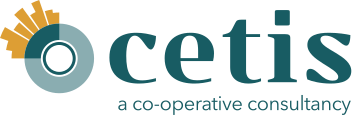As part of our work for Creative Commons on managing the Learning Resource Metadata Initiative (LRMI), Cetis today publish a new technical briefing paper “What is schema.org?”. LRMI is built on and expands schema.org so that it can be used to describe educationally significant characteristics of resources. At a technical level, the first step to understanding LRMI is to understand schema.org.
“What is schema.org?” describes the schema.org specification for a technical audience. It is aimed at people who may want to use schema.org markup in websites or other tools, and who wish to know more about the technical approach behind schema.org and how to implement it. As such, it has relevance beyond our work in supporting LRMI, and we hope it will be of interest to anyone describing resources on the web, whether these are educational resources or not. Additional briefings providing an in-depth technical overview of LRMI will follow.
This paper has been written by Phil Barker and Lorna M Campbell who lead Cetis’ work on LRMI. Phil has been involved in the LRMI technical working group since its inception in Summer 2011. He and Lorna each have over ten years experience in the creation and implementation of learning resource metadata standards and in semantic technologies for resource description.
The “What is schema.org?” briefing paper is available from our publications site at http://publications.cetis.ac.uk/2014/960
About LRMI
The Learning Resource Metadata Initiative is funded by the Bill & Melinda Gates Foundation, and jointly lead by Creative Commons and the Association of Educational Publishers—now the 501(c)(3) arm of the Association of American Publishers—with the aim of making it easier to publish, discover, and deliver high quality educational resources on the web. With input from a wide range of organisations, from both the open and commercial spheres, involved in publishing, creating and using educational resources, LRMI successfully proposed additions to schema.org (an initiative of Google, Yahoo and Bing) allowing the description of educationally important properties of resources to be marked-up in web pages in a manner that is easily understood by search engines. This enables users to create custom search engines that support the filtering of search results based on criteria such as their match to a specific part of a curriculum, the age of the students, or other relevant characteristics.
